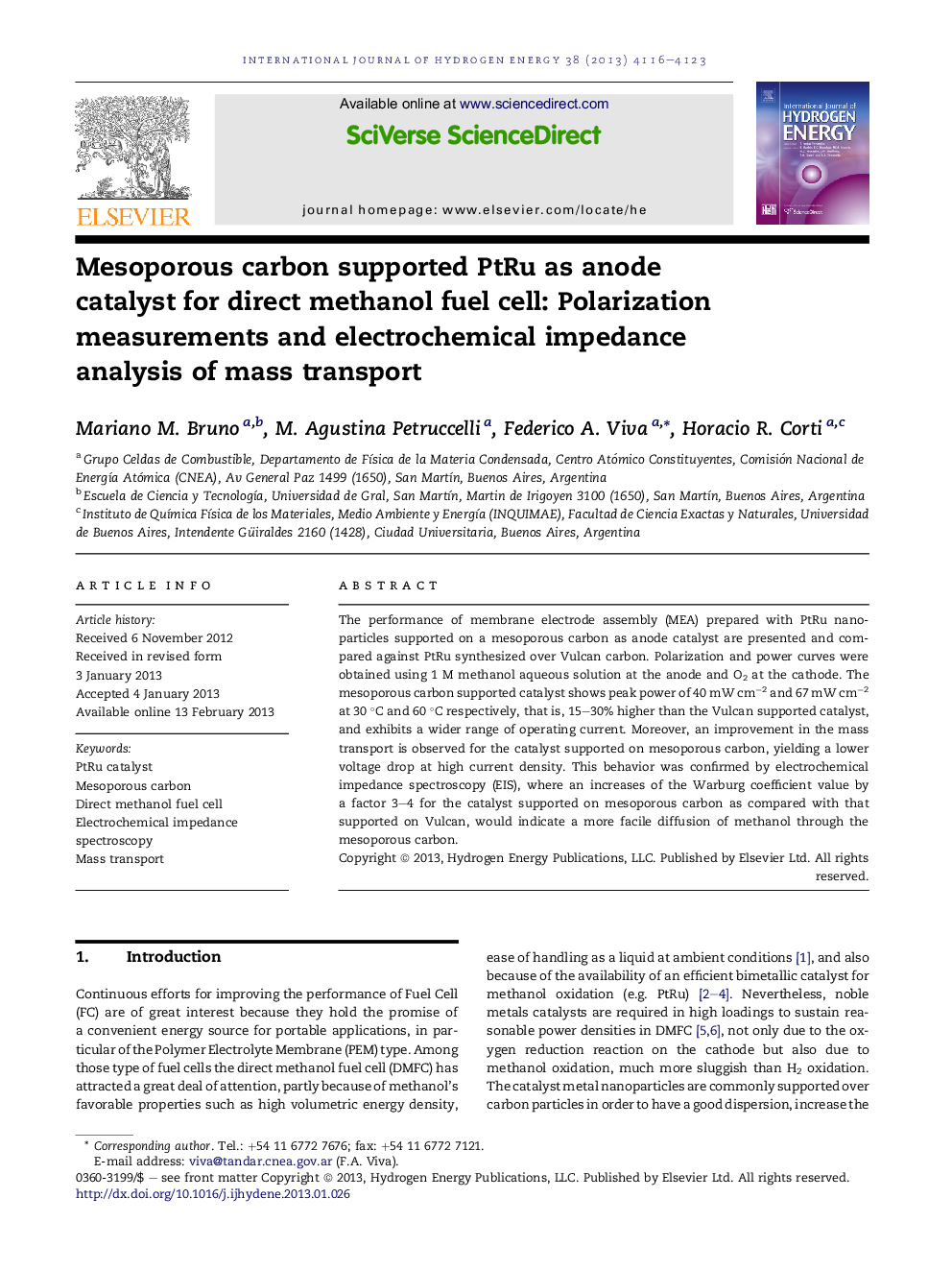| Article ID | Journal | Published Year | Pages | File Type |
|---|---|---|---|---|
| 1281876 | International Journal of Hydrogen Energy | 2013 | 8 Pages |
The performance of membrane electrode assembly (MEA) prepared with PtRu nanoparticles supported on a mesoporous carbon as anode catalyst are presented and compared against PtRu synthesized over Vulcan carbon. Polarization and power curves were obtained using 1 M methanol aqueous solution at the anode and O2 at the cathode. The mesoporous carbon supported catalyst shows peak power of 40 mW cm−2 and 67 mW cm−2 at 30 °C and 60 °C respectively, that is, 15–30% higher than the Vulcan supported catalyst, and exhibits a wider range of operating current. Moreover, an improvement in the mass transport is observed for the catalyst supported on mesoporous carbon, yielding a lower voltage drop at high current density. This behavior was confirmed by electrochemical impedance spectroscopy (EIS), where an increases of the Warburg coefficient value by a factor 3–4 for the catalyst supported on mesoporous carbon as compared with that supported on Vulcan, would indicate a more facile diffusion of methanol through the mesoporous carbon.
► PtRu supported on mesoporous carbon as anode catalyst for DMFC. ► Polarization measurements of active feed fuel cell. ► EIS measurements of working fuel cell at high current density. ► Higher peak power density for PtRu/MC than PtRu/C. ► Lower Warburg impedance for PtRu/MC compared to PtRu/C.
